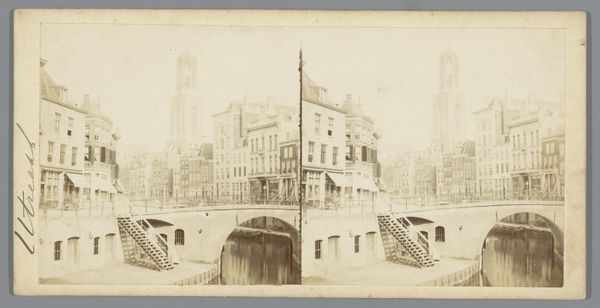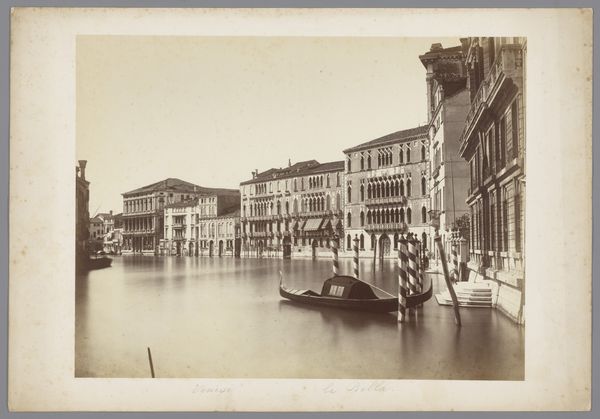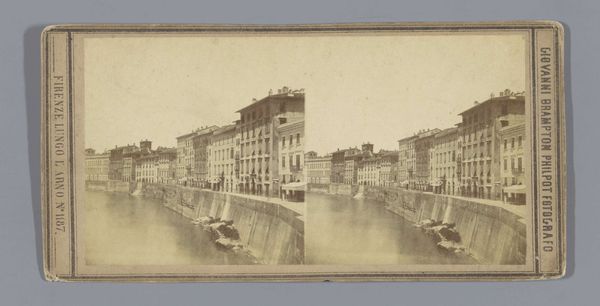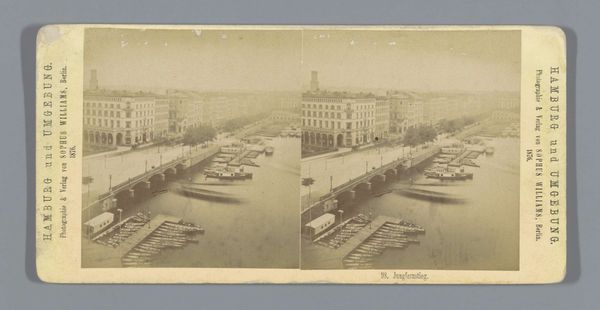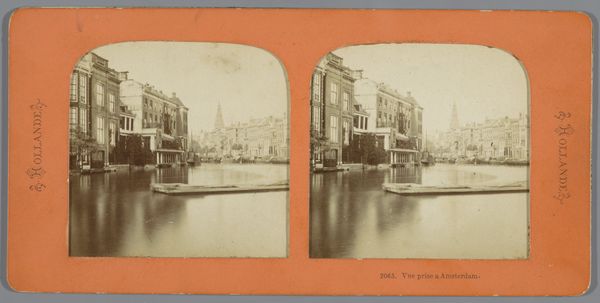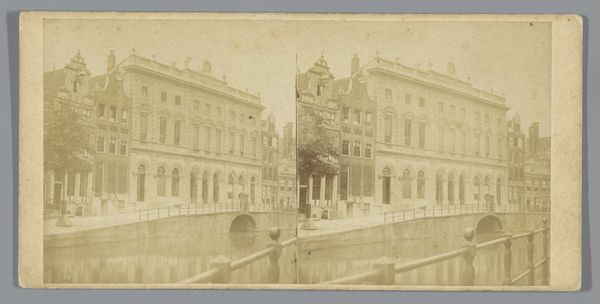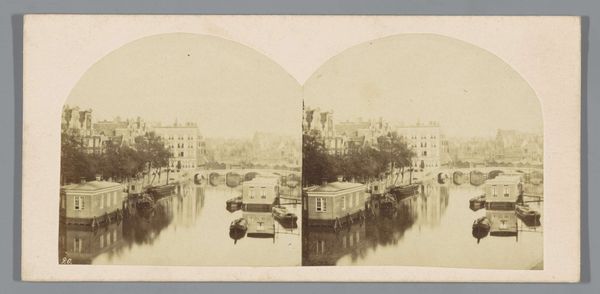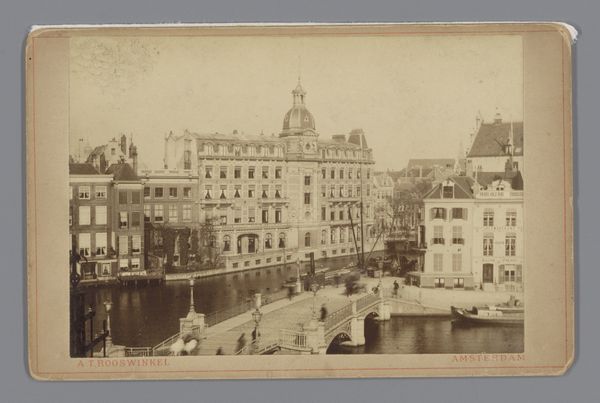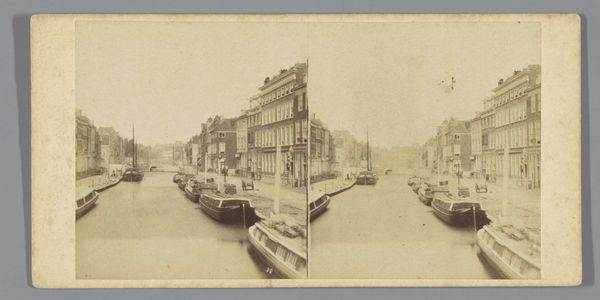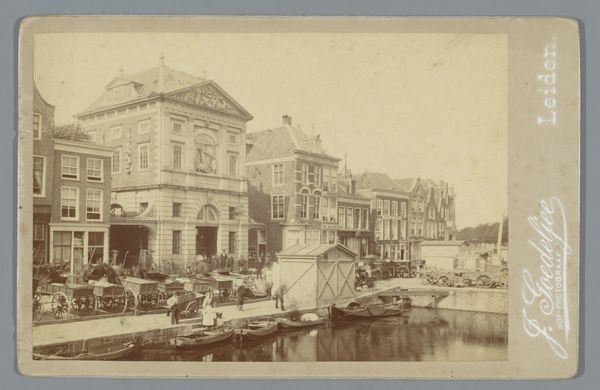
photography, gelatin-silver-print
#
photography
#
gelatin-silver-print
#
cityscape
Dimensions: height 87 mm, width 173 mm
Copyright: Rijks Museum: Open Domain
Curator: This gelatin-silver print, taken between 1857 and 1870 by Pieter Oosterhuis, presents a cityscape view titled "Gezicht op de Oudegracht en het stadhuis, Utrecht," which translates to "View of the Oudegracht and the Town Hall, Utrecht." Editor: There’s something almost dreamlike about this image. The sepia tones give it an aged quality, and the canal is so still, it feels frozen in time. The rigid geometry of the buildings provides an austere backdrop to everyday life. Curator: Consider how access to this visual record would have transformed public perception of their environment. The architecture isn't merely backdrop; it embodies power structures, civic identity, and evolving social values. Early photography created and codified an objective reality to legitimize Dutch society and civic virtue. Editor: Absolutely. The reflections on the water create an almost ghostly doubling of the buildings, imbuing these stone facades with ephemeral qualities. I'm curious about the symbolism of the water, both as a pathway for commerce and as a mirror reflecting identity back at the city. Curator: Think about the canals themselves – these veins through the city provided trade routes, connecting Utrecht to larger economic networks. However, the quays along the water had very restricted access: they served as both commercial loading and service points, but were only available to those who served trade. Editor: And yet there's a sense of harmony. The canal mirrors the architecture and evokes collective history; despite social tensions it has retained meaning for locals over generations. The image presents us with a particular vision of the Dutch civic and social identity, especially concerning public spaces in urban areas. Curator: The technical aspect is also noteworthy; the depth of field he achieved captures so much intricate detail within the scene. Through advancements in image making, it reveals a controlled perspective and contributes to the creation of an accessible reality. Editor: Reflecting upon the cityscape today through our evolved photographic techniques gives rise to so many questions concerning documentation, truth, and power. Curator: And by situating it within larger societal frameworks, its place can reveal narratives we're still unearthing about power dynamics.
Comments
No comments
Be the first to comment and join the conversation on the ultimate creative platform.
